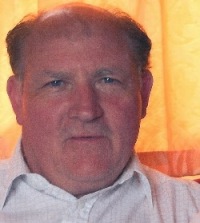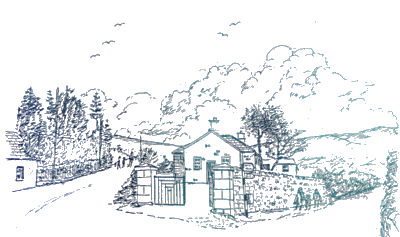 Irish Eyes
Irish Eyes
By
Mattie Lennon
It was Monday 06th October 1952. My mother led me by the hand the three quarter miles to the nearest school. A large granite stone above the door proclaimed “Lacken” National School” in sunken lettering. The word “Lacken” was legible though still filled with mortar. It had been thus unsuccessfully obliterated during the “emergency” a decade earlier, as part of the plan, by the State to confuse invading forces should they land in neutral Ireland.
It would not have had the desired effect since in the words of Patrick Kavanagh a; “….Child poet picked out the letters on the grey stone”
This attempt to confuse the Nazis and LDF boots and leggings worn by potato-diggers and turf cutters were the only relics of WW2 in the Lacken of my childhood.
I could hear the humming sound of third, fourth, fifth and sixth classes voices increasing in volume and becoming a murmerous tangle as Master Keane left the room to open the outside in response to my mother’s timid knock.
After a few brief words he turned on his heel and returned with the biggest book I’d ever seen. Balancing the tome on his left hand with navy-blue fountain-pen poised he asked the relevant questions. Full name……Address…..Date of birth……..How many children have you Ma’am?
Emotion smothered the first words of the reply which only became audible for”……but only the one survived”.
As the only child of older than average parents I was not aware all the foibles and idiosyncrasies which psychologists and those in allied professions claim that birth order bestows on us.
I had seen Mr. Keane before, at Mass. He always had blue-grey clothes and wore red shoes, even on weekdays. With my details documented in the Irish Education system the door was closed. I was led to the door of “the little school” where Mrs. White taught “infants first and second”.
A coal fire blazed in the grate and a statue of the Blessed Virgin, with broken hands, stood on the mantelpiece.
Ensconced in my desk I wrote my name with chalk on a slate.; joined up writing but with each letter ascending. (I wonder what would modern-day graphologists make of that?)
Rural electrification had just reached Lacen and the surrounding area. Poles which had stood, complete with insulators, all summer, sentry-like across the countryside were now strung with high-tension cables. An ESB official, a Mr. Heavy, from Naas called to the school to complain about the number of insulators (“cups”) being broken by stone-throwing. Boys from the townland of Ballinastockan were not more given to vandalism than the rest of us but they all seemed to have perfect aim. If you stood close to an ESB pole and looked up it appeared to be falling, something to do with an illusion caused by the rolling clouds. The term opto—kinetic movement would have meant very little to us.
Not every house opted for the “’lectric light”. This was mainly out of economic necessity and the “cups” on the chimney became somewhat of a status symbol. When the switching-on ceremony was performed in Valleymount in January 1953 conversation in the area was dominated by several fanciful theories about the finer points of electricity.
Well-dressed men in Ford vans travelled the district selling everything from irons, to kettles to Electric fires.
No ordinary household would dream of buying a fridge and for me, and the twenty-seven, other juniors in the “little School” it was a day to be remembered when Mrs. White brought in a tray from Burke’s shop bearing twenty-eight penny ice-creams.

Pictures: Lacken School ; my only acadamy and me with a famous Kerryman, Mr. Kelly.

|